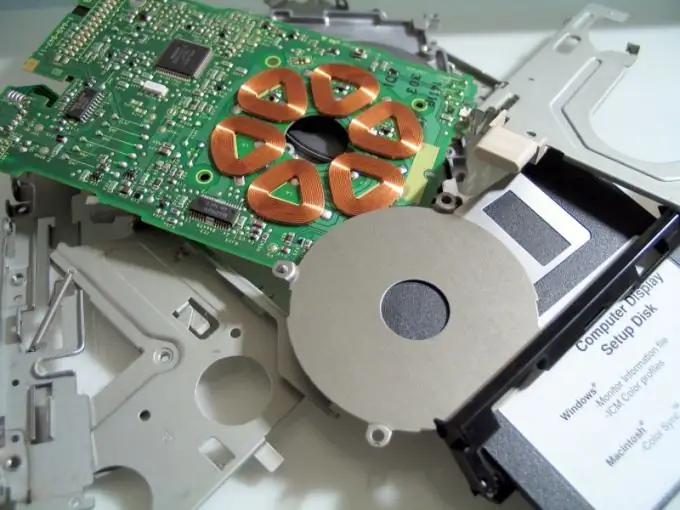Modern laptops are equipped with quick-detachable drives. Changing a drive on such a machine is even faster than on a desktop computer. You don't even need to open the body of the device for this.

Instructions
Step 1
Make sure that the reason for the inoperative drive is hardware, not software. First of all, check if it is enabled in the CMOS Setup program. If it turns out that the computer settings have nothing to do with it, purchase a special drive designed for installation in a laptop. Normal, for a desktop computer, will not work.
Step 2
Shut down the operating system installed on the laptop. Wait for it to turn off automatically. Remove the floppy disk from the floppy drive, if any.
Step 3
Unplug the power supply from the computer. Close his screen. Remove the battery.
Step 4
Unlock the latch (or several latches) securing the drive cassette. Pull it out with the cassette.
Step 5
Take a miniature Phillips screwdriver. Use it to remove the four screws that secure the drive. Save them.
Step 6
Pull the drive out of the cassette by moving it in its plane in the direction opposite to the connector of the adapter built into the cassette.
Step 7
Insert the new drive into the cassette by sliding it in the plane of the cassette towards the connector. After fixing, the fixing holes in it must line up with the corresponding holes in the cassette. Secure it with the screws that secured the old drive.
Step 8
Place the cassette with the new floppy drive back into the laptop. Secure it with latches.
Step 9
Replace the battery and connect the power supply to the laptop.
Step 10
Turn on your computer. Make sure the new drive is working.
Step 11
Replace the optical drive in a laptop in the same way, with the only difference that it is mounted in an adjacent cassette of a different size. Another cassette holds a hard drive. It also happens that the drive is connected directly, without a cassette, and the hard disk and optical drive are connected through it. It should be borne in mind that it will not be possible to connect a hard disk instead of an optical drive, or vice versa, as in a desktop computer, in a laptop.






